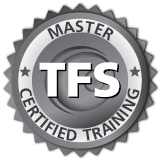Lectures
DWDM Components and Architecture
- DWDM Anatomy
- DWDM Impairments
- Multiwavelength Transmitters
- Multichannel Receivers
- DWDM Optical Amplifiers
- Wavelength Converters
- Modal Effects
- Scattering Effects
- Miscellaneous Effects
DWDM Impairments
- Spectrum
- Availability, Occupancy, Efficiency
- Bandwidth & Distance Limitations
- Noise, Dispersion, Non-linearities
- Four Wave Mixing (FWM)
- Cross-phase Modulation (XPM)
- Stimulated Brillouin Scattering (SBS)
- Stimulated Raman Scattering (SRS)
- Chromatic Dispersion (CD)
- Polarization Mode Dispersion (PMD)
- Amplified Spontaneous Emission (ASE)
- Modeling of Nonlinearities
- Noise-like penalties
- Illustrations with System Examples
- Optical Power Damage Threshold
- Fiber
- Components
- Noise Sources: ASE, Shot, Thermal, etc.
- Not-Return-to-Zero (NRZ) vs. Return-to-Zero (RZ) Transmission
- Dispersion and PMD Compensation
- The Effects of Optical Crosstalk
Analysis of Optical Components
- Parameters common to all optical components
- Optical Filters
- Optical Couplers
- Optical Power Attenuators
- Polarizer and Rotators
- Beam Splitters
- Optical Isolators and Circulators
- Optical Multiplexers and Demultiplexers
- Optical Cross Connects (OCXs)
- Optical Add Drop Multiplexers
- Optical Equalizers
- Light Sources
- Laser Beams
- Modulators
- Photodetectors and Receivers
- Optical Amplifiers
- Wavelength Convertors
- Optical Phase-Locked Loops
- Ring Resonators
- Optical Attenuators
- Optical SNR
EDFA Details
- Advantages
- EDFA Disadvantages
- Limited to C and L bands
- Pump Laser
- Erbium Doped Fiber
- Wavelength Selective Coupler
- Isolator
- A Comparison between EDFE, Raman Amplifier and SOAs
Networking with DWDM
- Optical Systems and Components Analysis
- Optical Transmitters: Lasers
- Modulation: Direct and External
- Optical Receivers: Photodetecters
- Couplers and Circulators
- Cavities and Filter
- Complex Components: Transponders
- Optical Switches
- Mechanical Switches
- Acousto-Optical Switches
- Micro-mechanical switches (MEMS)
- 2D MEMS (Bar State)
- 3D MEMS Switch Operation
- Electro-Optical and Thermo-Optical Switches
- Bubble Technology
- Liquid Crystal Switches
- Hologram-based Switches
- Factors That Affect System Design
- Effect of Chromatic Dispersion
- Q-Factor and OSNR
- What is the Q-factor?
- Methods to determine the Q-factor
- Asynchronous sampling (voltage histogram)
- Synchronous sampling (digital sampling scope)
- Synchronous sampling method (single decision threshold method)
- Synchronous sampling method (dual decision threshold method)
- Q-factor applications
- System test during manufacturing
- Installation of optical networks
- System optimization
- Maintenance and troubleshooting
- System monitoring
- Calculation of Q-Factor from OSNR
- Margin Requirements
- Design Using Chromatic Dispersion Compensation
- OSNR and Dispersion-Based Design
- Effects of FWM and XPM on Long-Haul Design
- PMD in Long-Haul Design
- Forward Error Correction (FEC)
DWDM Span Engineering
- Engineering a DWDM link
- Power Budget Design
- What are the factors?
- Digital Modulation Formats
- Fiber Impairments
- Loss
- Dispersion
- Nonlinear Effects (SPM, XPM, FWM, Raman)
- Polarization Dependent Effects (PDL and PMD)
- Noise Sources and Noise Accumulation
- Bit Error Rate and Signal-to-Noise-Ratio
- Signal Crosstalk
- DWDM Systems Design Amplifier power
- Amplifier spacing
- Fiber types
- Channel count and bit rate
- Channel Bit Rate
- Dispersion and polarization
- Non-linear effects
- Simulation and testing
DWDM Testing, Measurements and OAM&P
- Test and Measuring Devices
- Characterization of a DWDM Mux and Demux
- Characterization of a DWDM OADM
- EDFA Testing
- Optical Waveform Analysis
- Complete DWDM End-to-End
- Component conformance tests
- Parameter tests on optical fibers
- System installation tests
- System optimization tests
- System acceptance tests
Labs
This course does not require labs.
Prerequisites: None
Knowledge or experience in the areas of Fiber Optic Advantages and Applications, Cables, Connectors and Terminations, Enclosures and Panels, and Test Equipment would be helpful, but is not required.
Target Audience
This course is designed for strategic or technical managers, consultants, communications professionals, software engineers, system engineers, network professionals, marketing and sales professional, IT professionals, and others who plan on using, evaluating or working with DWDM and optical networks applications and services.


